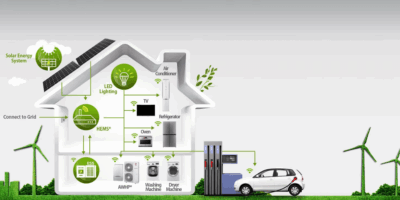Generator For Telecom Market
Generator For Telecom Market expected from 1.5 billion in 2023 to USD 1.90 billion in 2033 and size is expected to grow at an annual average of CAGR 6.6% during the forecast period (2024-2033)
Generator for Telecom Market Overview
Introduction: Generators are essential for providing backup power to telecommunication infrastructure, ensuring uninterrupted communication services during power outages or emergencies. The telecom industry relies on generators to maintain network uptime, support critical operations, and meet service level agreements (SLAs) with customers.
Objective: This market overview aims to analyze the global generator market for the telecom sector, including market size, trends, drivers, challenges, and regional dynamics.
Market Overview: The generator market for telecom is driven by factors such as increasing demand for reliable communication services, expansion of telecommunication networks in remote or off-grid areas, and regulatory requirements for backup power. Telecom companies invest in generators to enhance network resilience, improve service reliability, and minimize revenue losses associated with downtime.
Market Drivers:
- Network Reliability: Telecom operators prioritize network reliability and uptime to meet customer expectations and maintain competitive advantage, driving investments in backup power solutions such as generators.
- Remote Site Deployment: Telecom infrastructure is often deployed in remote or rural areas with unreliable grid power, necessitating the use of generators to ensure continuous operation and coverage.
- Disaster Preparedness: Natural disasters, extreme weather events, and other emergencies can disrupt grid power supply, highlighting the importance of backup power solutions like generators to support disaster recovery efforts and maintain communication services.
- Regulatory Compliance: Regulatory authorities impose requirements for backup power in telecom facilities to ensure service continuity and emergency communications capability, driving demand for generators in the telecom sector.
Market Challenges:
- Environmental Regulations: Stringent environmental regulations governing emissions and noise levels pose challenges for generator deployment in urban or environmentally sensitive areas, prompting telecom companies to explore cleaner and quieter power solutions.
- Fuel Availability and Logistics: Ensuring reliable fuel supply for generators, especially in remote or inaccessible locations, can be challenging, requiring careful fuel management and logistics planning to maintain operational readiness.
- Cost and Efficiency: Balancing the costs of generator procurement, installation, operation, and maintenance with the need for reliable backup power presents financial challenges for telecom operators, driving demand for cost-effective and efficient generator solutions.
- Technology Obsolescence: Rapid advancements in generator technology, including fuel efficiency, remote monitoring, and automation, require telecom companies to continually upgrade and modernize their generator fleets to remain competitive and compliant with industry standards.
Overview of the Generator for Telecom Market
Introduction
The telecommunications industry relies heavily on a continuous power supply to maintain network stability and provide uninterrupted services. Power outages, especially in critical infrastructure, can lead to significant disruptions, loss of data, and customer dissatisfaction. Generators for telecom are designed to provide reliable backup power to telecom sites, including base stations, data centers, and switching offices. This market has seen substantial growth driven by the expansion of telecom networks, increasing data consumption, and the need for reliable communication infrastructure. This comprehensive overview covers the historical development, technological advancements, market segmentation, trends, drivers and challenges, competitive landscape, regional insights, and future outlook for the generator for telecom market.
Historical Development
The use of generators in the telecom industry dates back to the early days of telephone networks when maintaining communication during power outages became a priority. Initially, diesel generators were predominantly used due to their robustness and availability. However, as technology evolved and the need for more efficient and environmentally friendly solutions grew, the market saw the introduction of gas and hybrid generators.
In the 1980s and 1990s, the rapid expansion of mobile networks necessitated reliable backup power solutions. Generators became critical in ensuring the uptime of base stations, especially in remote and rural areas with unreliable power grids. The advancement of digital communication and the rise of data centers further boosted the demand for sophisticated and dependable power backup systems.
Technological Advancements
- Fuel Efficiency and Emissions Reduction: Modern generators for telecom are designed to be more fuel-efficient and produce fewer emissions. Innovations in engine technology and the use of cleaner fuels like natural gas and biogas contribute to reducing the environmental impact of backup power solutions.
- Hybrid Systems: Hybrid generators combine conventional fuel-based generators with renewable energy sources like solar or wind power. These systems are particularly advantageous in reducing fuel consumption and emissions, and they provide a more sustainable solution for telecom power needs.
- Remote Monitoring and Control: The integration of IoT and remote monitoring technologies allows for real-time tracking of generator performance. Telecom operators can monitor fuel levels, engine health, and maintenance needs remotely, ensuring timely interventions and reducing downtime.
- Compact and Modular Designs: Advances in engineering have led to more compact and modular generator designs. These generators are easier to install and maintain, making them ideal for space-constrained telecom sites.
- Enhanced Battery Storage: Pairing generators with advanced battery storage systems ensures that telecom sites can maintain power during the transition period when switching from the main grid to generator power. This hybrid approach enhances reliability and reduces generator runtime, conserving fuel.
Market Dynamics
Drivers
- Expansion of Telecom Networks: The rapid growth of mobile and broadband networks, especially in emerging markets, drives the demand for reliable backup power solutions. The deployment of new base stations and data centers necessitates the use of generators to ensure continuous operation.
- Increasing Data Consumption: The exponential increase in data consumption due to the proliferation of smartphones, IoT devices, and cloud services requires robust telecom infrastructure. Generators play a crucial role in maintaining uptime for data centers and other critical telecom facilities.
- Unreliable Power Grids: In many regions, especially in developing countries, the power grid is unstable and prone to outages. Generators provide a reliable backup power source, ensuring that telecom services remain uninterrupted.
- Natural Disasters and Emergencies: Natural disasters and emergencies can disrupt power supply for extended periods. Generators ensure that telecom networks remain operational during such events, facilitating communication and coordination for disaster response.
- Regulatory Requirements: Regulatory standards and requirements for telecom infrastructure often mandate the use of reliable backup power solutions to ensure network availability and quality of service.
Challenges
- High Initial Investment: The cost of purchasing and installing generators, especially advanced hybrid and renewable-based systems, can be high. This initial investment can be a barrier for some telecom operators, particularly smaller companies or those in regions with limited financial resources.
- Maintenance and Operational Costs: Generators require regular maintenance and fuel, which add to the operational costs. Ensuring timely maintenance and managing fuel logistics can be challenging, particularly for remote and dispersed telecom sites.
- Environmental Concerns: Traditional diesel generators produce significant emissions, contributing to environmental pollution. There is increasing pressure on telecom operators to adopt more environmentally friendly solutions, which can involve higher costs and technological shifts.
- Fuel Supply and Logistics: Ensuring a reliable supply of fuel for generators, especially in remote areas, can be logistically challenging. Any disruption in fuel supply can impact the operational readiness of telecom networks.
- Technological Integration: Integrating generators with modern telecom infrastructure and remote monitoring systems requires technical expertise and can involve compatibility issues with existing equipment.
Market Trends
- Adoption of Renewable Energy Solutions: There is a growing trend towards the adoption of renewable energy solutions, such as solar-powered generators and hybrid systems. These solutions are not only environmentally friendly but also reduce operational costs by lowering fuel consumption.
- Smart Grid Integration: Integration with smart grid technologies allows telecom operators to optimize power usage, switch seamlessly between grid power and backup generators, and reduce operational costs. Smart grids also facilitate better load management and energy efficiency.
- Deployment in Emerging Markets: The telecom sector in emerging markets is expanding rapidly, driving the demand for generators to support new network deployments. These markets present significant growth opportunities for generator manufacturers and service providers.
- Focus on Compact and Portable Generators: The development of compact and portable generators addresses the needs of telecom operators for flexible and easy-to-deploy power solutions. These generators are particularly useful for temporary installations and mobile telecom units.
- Enhanced Battery Storage Solutions: Advances in battery technology are enabling the development of more efficient energy storage solutions. Pairing generators with high-capacity batteries ensures seamless power supply transitions and reduces reliance on continuous generator operation.
Competitive Landscape
The generator for telecom market is competitive, with several key players offering a wide range of products and solutions. Major companies include:
- Caterpillar Inc.: Caterpillar offers a broad range of diesel and gas generators designed for various applications, including telecom. Their products are known for reliability and durability.
- Cummins Inc.: Cummins provides a comprehensive portfolio of generator solutions, including diesel, gas, and hybrid systems. Their generators are widely used in telecom infrastructure due to their performance and efficiency.
- Generac Power Systems: Generac specializes in backup power solutions, offering generators that cater to residential, commercial, and industrial applications. Their telecom-specific generators are designed for high reliability and ease of maintenance.
- Himoinsa: Himoinsa, part of the Yanmar Group, offers a range of generator solutions tailored for telecom applications. Their products are known for their robust design and ability to operate in harsh conditions.
- Kohler Co.: Kohler provides reliable and efficient generator solutions for telecom infrastructure, including both diesel and gas options. Their products are designed to meet stringent regulatory requirements and ensure continuous operation.
𝐑𝐞𝐜𝐞𝐢𝐯𝐞 𝐭𝐡𝐞 𝐅𝐑𝐄𝐄 𝐒𝐚𝐦𝐩𝐥𝐞 𝐑𝐞𝐩𝐨𝐫𝐭 @ https://stringentdatalytics.com/sample-request/generator-for-telecom-market/14112/
Market Segmentations:
Global Generator for Telecom Market: By Company
Caterpillar Inc.
Cummins Inc.
Generac Power Systems Colombia
HIMOINSA
Kohler Co.
Global Generator for Telecom Market: By Type
DC Telecom Genset with HBSM
AC Telecom Genset
Others
Global Generator for Telecom Market: By Application
On-Grid
Off-Grid
𝐂𝐥𝐢𝐜𝐤 𝐭𝐨 𝐏𝐮𝐫𝐜𝐡𝐚𝐬𝐞 𝐌𝐚𝐫𝐤𝐞𝐭 𝐑𝐞𝐬𝐞𝐚𝐫𝐜𝐡 𝐑𝐞𝐩𝐨𝐫𝐭 @ https://stringentdatalytics.com/purchase/generator-for-telecom-market/14112/?license=single
Regional Analysis:
- North America: The telecom generator market in North America is driven by the presence of established telecom operators, stringent regulatory requirements, and the need to maintain reliable communication services in urban and rural areas. The region also sees significant investments in renewable energy-powered telecom sites to reduce reliance on fossil fuel generators.
- Europe: European telecom operators focus on energy efficiency, sustainability, and carbon footprint reduction, driving investments in hybrid power solutions integrating generators with renewable energy sources. Regulatory initiatives promoting clean energy and environmental sustainability influence market dynamics in the region.
- Asia-Pacific: The Asia-Pacific region experiences rapid growth in telecom infrastructure deployment, particularly in emerging markets like India, China, and Southeast Asia. Telecom operators in these regions invest in generators to support network expansion efforts, improve service coverage, and ensure connectivity in remote or underserved areas.
- Middle East and Africa: Telecom operators in the Middle East and Africa face challenges related to unreliable grid power, political instability, and extreme weather conditions, driving demand for reliable backup power solutions like generators. Off-grid telecom sites, rural electrification projects, and mobile network expansion initiatives contribute to market growth in the region.
Conclusion: The generator market for the telecom sector plays a critical role in ensuring network reliability, service continuity, and disaster preparedness for telecom operators worldwide. Despite challenges such as environmental regulations, fuel logistics, and cost constraints, the market continues to grow driven by increasing demand for communication services, expansion of telecom networks, and regulatory compliance requirements. Continued investments in technology innovation, renewable energy integration, and regulatory compliance will be key to unlocking the full potential of the telecom generator market and meeting the evolving needs of the telecom industry.
About Stringent Datalytics
Stringent Datalytics offers both custom and syndicated market research reports. Custom market research reports are tailored to a specific client’s needs and requirements. These reports provide unique insights into a particular industry or market segment and can help businesses make informed decisions about their strategies and operations.
Syndicated market research reports, on the other hand, are pre-existing reports that are available for purchase by multiple clients. These reports are often produced on a regular basis, such as annually or quarterly, and cover a broad range of industries and market segments. Syndicated reports provide clients with insights into industry trends, market sizes, and competitive landscapes. By offering both custom and syndicated reports, Stringent Datalytics can provide clients with a range of market research solutions that can be customized to their specific needs.
Reach US
Stringent Datalytics
+1 346 666 6655
Social Channels:
Linkedin | Facebook | Twitter | YouTube




Leave a Reply